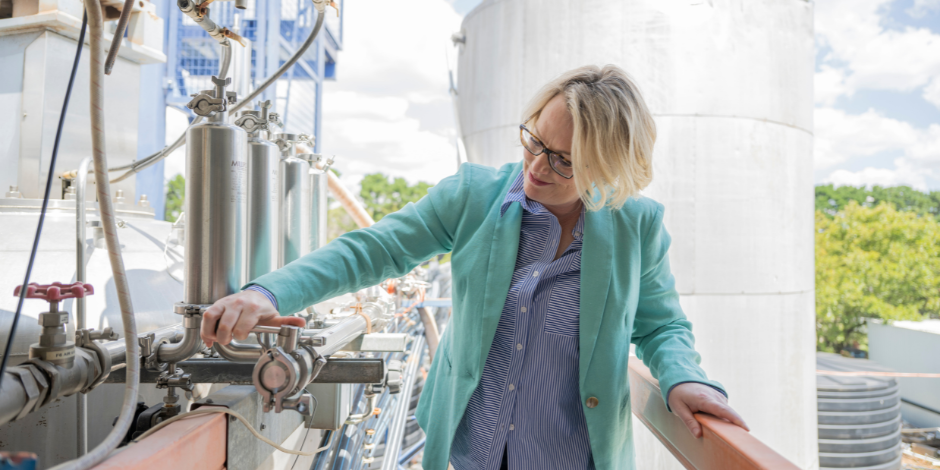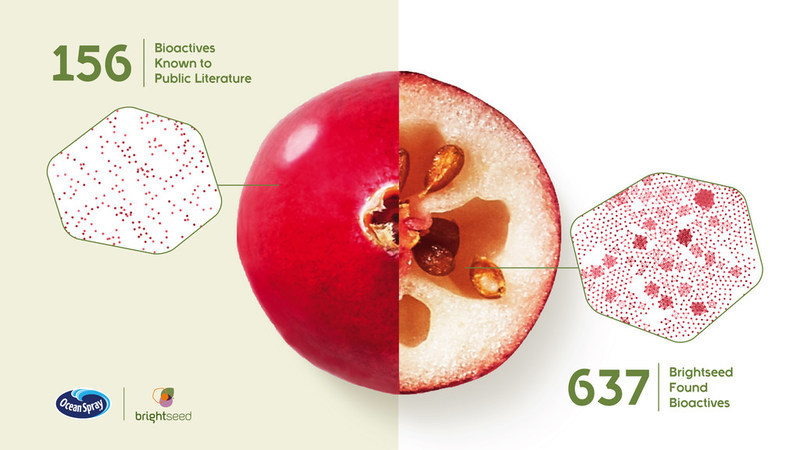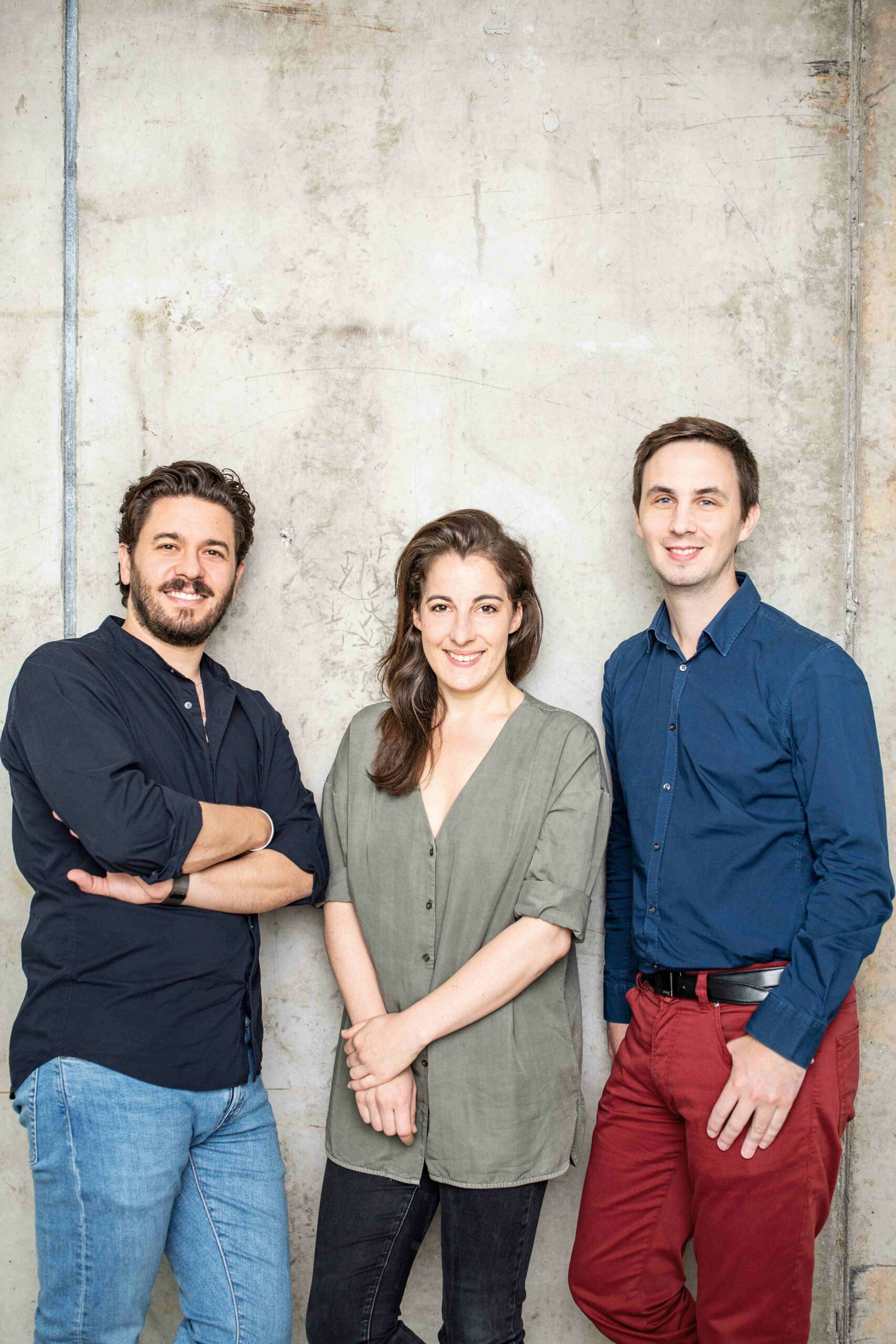Through the looking glass: How these innovators are harnessing biotechnology to transform health and nutrition
Biotechnology is changing the lens through which we understand biology, and in doing so is transforming our approach to health and nutrition. Here we explore four companies and innovative applications of this rapid developing field.

Cauldron Ferm – scaling up precision fermentation of food, feed or fibre
Brewed in giant fermentation tanks (like your favourite brewery), precision fermentation can deliver commercial quantities of food, feed or fibre using only a fraction of the land and water.
The Cauldron Ferm (Cauldron) model moves lab-based precision fermentation from prototype to market by standing up the necessary infrastructure for manufacturing at scale.
“We help companies translate their technology from universities to an industrial process and provide them with manufacturing facilities”, said CEO and Co-Founder of Cauldron Michele Stansfield, an Australian company with plans to build the largest network of precision fermentation facilities in the Asia-Pacific region.
The company recently raised $10.5 million in seed funding, which will help develop pilot facilities in Orange, NSW and progress plans to build infrastructure, or Cauldrons, co-located with existing agribusiness and companies across Australia.
Michele said they are currently working on a feasibility study to co-locate with the sugar industry in Queensland. The aim is to develop a partnership that would leverage existing infrastructure and offer diversification of business while adding a potential revenue uplift from the higher prices obtained for protein as compared with sugar. This model would be applicable for other sectors where for example, a starch by-product currently used for low-cost animal feed is converted to protein, which could be sold at a higher price.
While it is early in the journey to market for Cauldron customers, the critical need for manufacturing infrastructure is evidenced by the cross-competitor support that brought Cauldron into existence. Of the radical collaboration, Stansfield said, “Let’s win first and complete later.
RELATED: Expert panel shows opportunities for SynBio in Australian agrifood sector
Brightseed – using AI to accelerate understanding of bioactives and health
Using machine learning and Artificial Intelligence (AI), San Francisco based company Brightseed aims to significantly change the health paradigm. “We are now applying this technological power to the bioactive molecules that exist in nature so we can be proactive about our health and not reactive”, said Brightseed, Co-Founder and COO Sofia Elizondo.
RELATED: Todd-versations Presents Sofia Elizondo of Brightseed
The company has developed Forager, a predictive platform that indexes a database of plants, plant compounds and a digital model of human health, to identify patterns and build connections between plant molecules (bioactives) and human health points at an accelerated pace. After processing plant compounds to microscopic equivalence, Sofia said that AI is used to move beyond the limitations of microscopic power and predict what the compounds are. “The predictive platform can point us in the right direction to validate those predictions scientifically.”
In the field, Brightseed in partnership with farmer-owned cranberry cooperative, Ocean Spray, is using Forager to profile the phytochemical composition of different cranberry strains in order to identify new connections with human health. It is also hoped the information will provide data for sustainable crop management.

In a few months of A.I.-powered analysis on Ocean Spray’s cranberry strains, Forager found 10x more bioactive phytochemicals and 4x more phytonutrients across a sample of Ocean Spray’s cranberry varieties. Image: Ocean Spray/Brightseed
On the shelf, a food ingredient based on hemp hulls has been developed. Existing preclinical data suggested a link between two specific phenolic acids and support for gut health. Using Forager, Brightseed identified hemp hulls as being the richest source of those compounds. The result is Brightseed Bio 01, a novel source of dietary fibre that can be added to a range of foods. Samples can be ordered from the Brightseed website.
Mushlabs – tapping into fungi fermentation to feed tasty protein alternatives
Taking the roots of fungus (mycelia) and cultivating them, European biotech company, Mushlabs creates alternatives to meat, dairy and fish.
Mycelium are the vegetative part of fungi, which exist as a filament-like network of roots beneath the soil. The mechanism used by mycelium to decompose and recycle waste streams in the soil, underpins the fermentation process at Mushlabs.
Founded in 2018, the company was selected for the EU’s EIC Accelerator programme in 2022. It has since developed more than 20 different prototypes and is focussed on meat alternatives for the current go-to-market phase.

Mushlabs Founders Mazen Rizk, Cathy Hutz and Thibault Godard
The process works by using pieces of mycelia, which are grown in a controlled environment and fed by side-streams sourced from food and agri-businesses. The resultant product is a non-GM biomass that is high in both protein and dietary fibre. The mycelium fermentation product differs from many yeast fermentation products in that it is not a by-product of single cell fermentation as is the case with wine and beer production, instead it is the multi-cellular biomass that is the alternative food source.
Additionally, mycelium’s umami flavour profile is key to producing a tasty product. At the DLD Conference in Munich (2022), Founder and CEO Dr Mazen Rizk said the natural savoury flavour of mycelium was fundamental to successfully developing tasty products using significantly fewer ingredients than seen in competitor products.
In terms of sustainable production, the Mushlabs process has a smaller natural resource footprint, requiring less land and water than conventional production methods. Production is also not limited to agricultural regions or subject to weather and climate events. In this way, the waste-free, circular method of producing a nutritionally dense food offers an innovative response to food scarcity and wastage.
Multi-function plants delivering food, fibre and fuel
When we’re talking about sustainable production it’s not just new food types in the frame – there’s opportunity in multifunction plants.
Professor Rachel Burton, University of Adelaide, has led several projects investigating multi-functional plants for use as food, fibre and fuel sources. In the context of nutrition, Rachel is focused on alternative protein and she sees enormous potential in hemp.
RELATED: Biomanufacturing for Earth, sustainability and space
In the field, hemp has significant potential as an alternative crop. Early research suggests it can be produced using significantly less water than traditional cereal crops and with the right cultivar a multi-use crop could be grown year-round. As a four-month crop, hemp could be harvested as a seed crop first and later as a fibre crop, providing additional revenue streams for farmers working with conventional crops.
Rachel said the protein produced from hemp seeds is nutritionally dense and more palatable than some alternative protein sources. Consumer uptake since food production using hemp seeds was legalised in 2017 has been slower than anticipated, something Rachel attributes this to confusion around hemp and cannabinoids, of which there are none in hemp seeds. This perhaps also explains the ongoing and protracted approval process underway for the use of hemp leaves as a food source, which are high in terpenes and flavonoids with anti-inflammatory properties.
The prebiotic and potential medicinal properties of agave are also of interest but like hemp, Rachel predicts that it will be its use as energy and construction alternatives that will open the door for greater use of these plants and for their nutritional value to be realised.
For more insight into the innovation in our agrifood sector book your ticker for evokeAG. 2024 in Perth, Western Australia on 20-21 February.
Tickets are on sale for evokeAG. 2024 to be held on 20-21 February 2024 in Perth, Western Australia. Following a sell-out event in 2023 we are encouraging delegates to secure their tickets, flights and accommodation early.
We look forward to seeing you in Perth for evokeAG. 2024, in the meantime, catch up on the other conversations about sustainability, climate resilience and the role of agritech in meeting those challenges from evokeAG. 2023 here.
